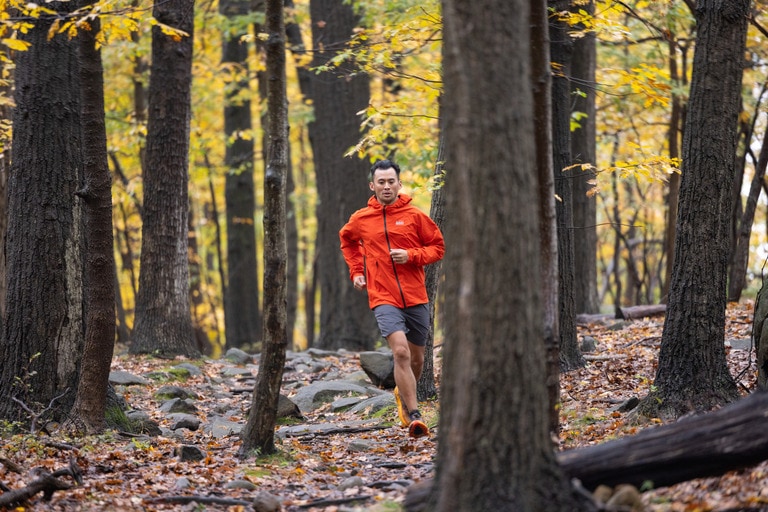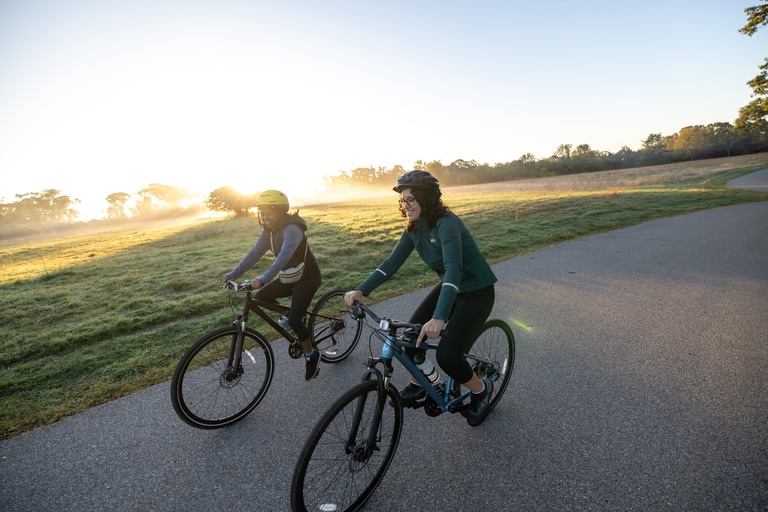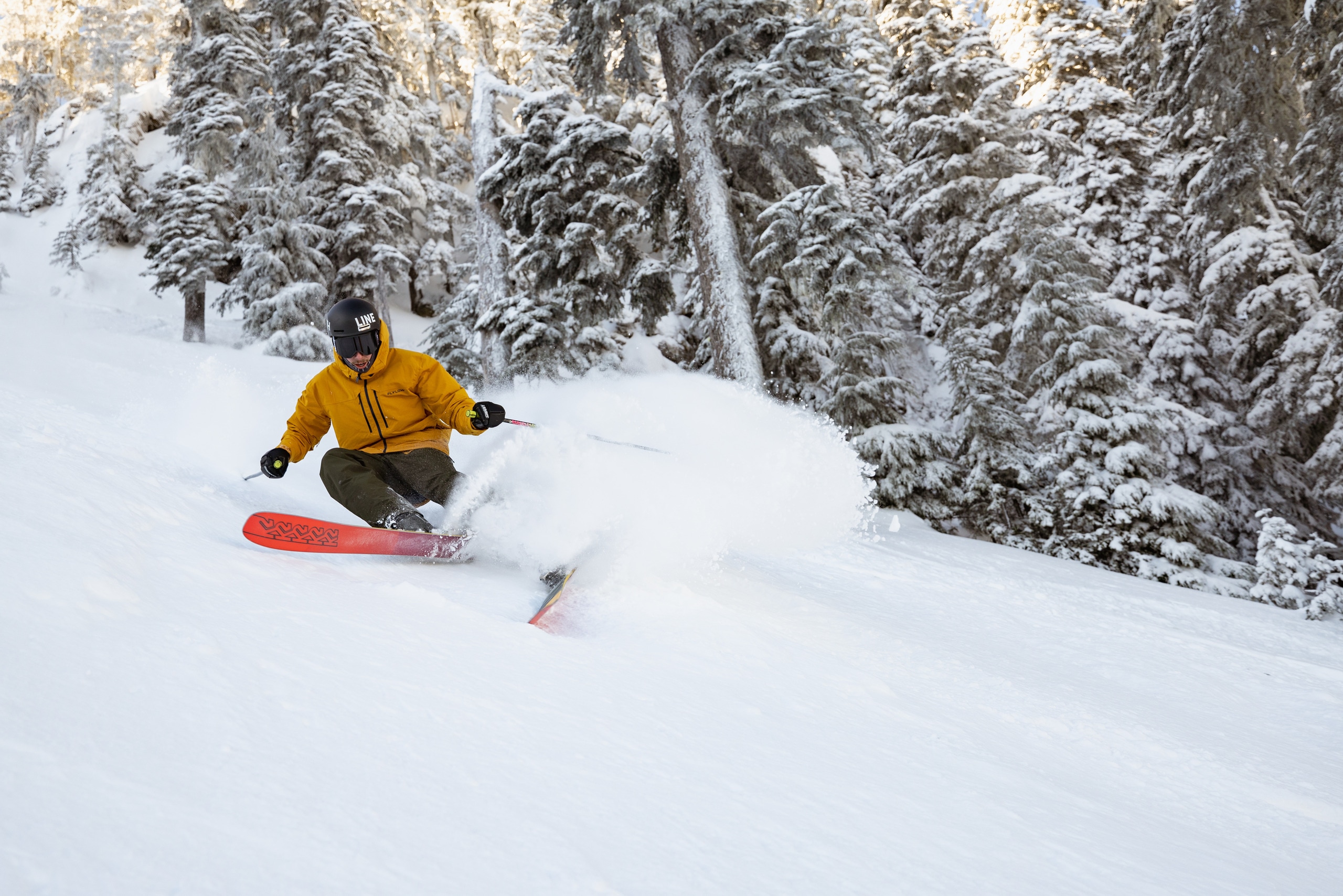There are many ways to create a piece of clothing that works. One strategy often used in the outdoor apparel world is called "body mapping," which is a construction technique that utilizes different materials and material aspects for designing technical apparel specifically for performance.
Here, we discuss in more depth what the term means; how body mapping works; and why it's a feature to look for in your favorite trail-, rock- and slope-ready garments.
What is body mapping?
In the broadest sense, body mapping is a technique for designing technical apparel that incorporates how the body moves and responds while performing the activity the garment was intendedfor.
Body-mapped garments are almost never constructed uniformly; instead, they vary in material, in thickness, even in the yarn used throughout the garment, depending on how a particular area needs to function. The goal of body mapping is to create a shirt or jacket that feels as comfortable as possible and that helps the wearer perform as well as possible, while hiking, skiing, biking, climbing or enjoying another activity. After all, the best clothing is clothing that works so well you forget you're wearing it, says Sue Jesch, director of design at Smartwool. "That way," Jesch adds, "you can be full-in on the experience."
You probably have body-mapped garments in your closet already. Think of your bike shorts, which have padding where you need it—and none where you don't.
How does body mapping work?
When an outdoor clothing company wants to create, say, a new shirt, the first questions to answer are: What will the shirt be used for, and where will it be used? Does the company want to make a shirt that's intended for running in hot and humid conditions? Or, will the shirt be worn skiing in cold and dry areas?
Not so long ago, a designer would take those answers and create a garment from whole cloth (literally): A shirt would contain the same material throughout and would have a pretty standard shape. With body mapping, however, a new kind of shirt begins to appear, one that's often not made from a single ingredient but is more akin to a quilt, containing a variety of fabrics or weaves. "Depending on what you're trying to solve for, you can insert different materials," says Chris Blum, vice president of product at Flylow.
For instance, researchers have extensive data on how the body releases heat when participating in different activities. Using these maps of the body's hot and cold spots, and where it sweats and doesn't, can help tailor the shirt for that movement and level of exertion, says Dan Abrams, Flylow cofounder and president. A designer might add extra insulation to the center of a running jacket to keep a jogger's core comfortable (yay, warmth!) but remove it from the jacket's back panel, to prevent overheating while also reducing weight. Water- and windproof materials might show up in areas that get buffeted by the elements (looking at you, shoulders), but not added throughout the entire garment since those materials can hinder breathability, which is often of paramount importance in a running jacket.

Body Mapping, Two Ways
But how is it possible to design a shirt or jacket that can achieve so much? One way is to map the kind of materials that are used. Another way is to map down to the level of the yarns that are used. Or, a company can do both.
- Yarn level: When designers body map a shirt to the yarn level, they knit and weave the components from different types and/or weights of yarn. Smartwool, for instance, does this in its in base layers, mixing its trademark merino wool with polyester and other yarns—thicker in some areas and thinner in others.
- Material level: When designers body map a garment at the material or "textile" level, they sew, glue, or otherwise piece together different materials that perform different functions. You'll find this construction technique used by many companies. One Flylow ski jacket features fleece or flannel in body zones that require a boost of insulation; breathable mesh in areas that need cooling; and a different ripstop fabric in the elbows for durability.
Regardless of the construction methodology, the designer will use the garment's ultimate purpose—the activity and conditions—as their North Star in determining the ideal combination of breathability, warmth, durability, mobility and fit.
Does body mapping actually work?
Clothing companies these days swear by it, and point out that studies agree that it works for a variety of activity-specific garments, from running apparel to ski underwear. "The findings confirmed the effects of optimized clothing with body-mapping optimized design and advanced fabrics," concluded one 2017 study. Here are some examples of body mapping as it's incorporated into products on the shelf:
- Temperature regulation Consider your underarms
:Becausethey generate a lot of heat, designers now incorporate strategies in shirts to move that heat away from the body. A body-mapped shirt might feature a lighter-weight fabric under the arms; a more loosely woven fabric; or a material that moves moisture away from the body and dries quickly, such as wool. Still more options include allowing more air to the area, in the form of microperforations in a fabric; or else including vents and even zippers (think ski pants and jackets). "The most fun part of the design process is controlling the benefits of the garment through those different constructions," says Blum from Flylow. Conversely, areas known to sweat less and that like to stay warm during cold-weather pursuits (like the chest and core regions) might be given an extra (or extra-thick) layer of insulation, with more breathable knit side panels and sleeves. Of course, the type of insulation matters too, since some insulators perform better in dry conditions while others excel in wet conditions. (Related reading: Down vs. Synthetic: Which Insulation Is Right for You? and How to Choose Insulated Outerwear) - Abrasion resistance and cushioning Some parts of outdoor apparel take a beating during specific activities, so garment designers might reinforce those areas and/or choose to use a more durable, often higher denier material. Some climbing pants have reinforced knees designed to stand up to chimneying, kneebars and other full-body climbing tactics. And every outdoor sockmaker today adds cushioning in high-impact areas, so the wearer can stay on their feet in comfort for a longer period of time.
- Enhanced mobility Some sports have movements particular to them. Jackets with good mobility in the arms are best for Nordic skiers, for example, so they can effortlessly swing their poles.

One Body Mapping Caveat
In order to get the full benefits from a body-mapped garment, it needs to map to your unique frame, explains Elizabeth Nguyen, senior retail specialist at the REI store in Atlanta. Also consider your own internal thermometer. The best strategy is to head into your local REI and get sized, she says: "When you're talking about technical gear or any type of clothing, you need to try it on."


